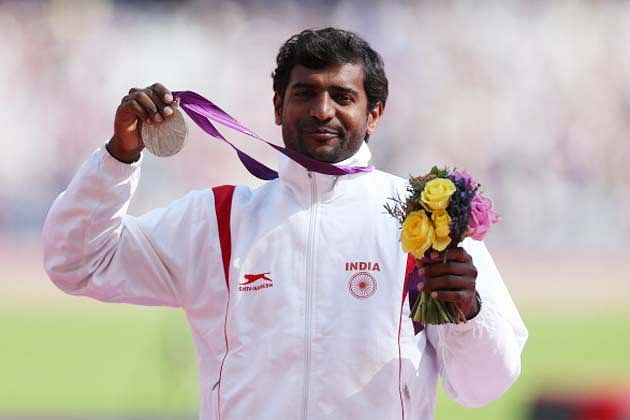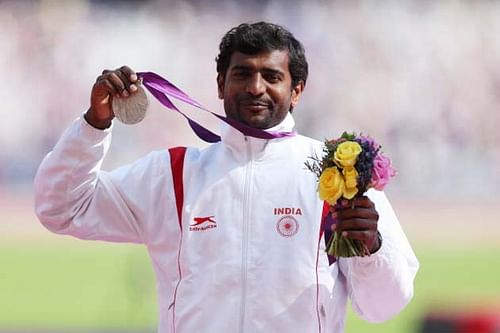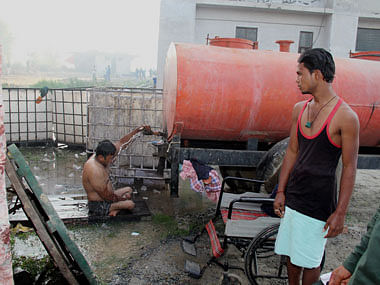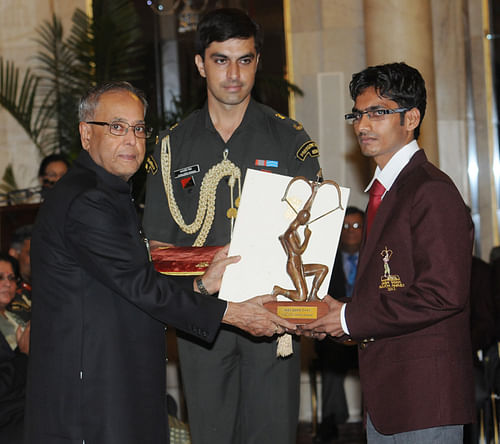
Is para-athletics in India on the cusp of extinction?

Lack of drinking water and no proper sanitation at the National Para-athletics meet in Ghaziabad only skimmed the surface of problems that Indian para-athletes have faced over the years. This momentary state of infrastructural problems has always existed in the Indian Paralympic realm, but it’s only recently that media coverage about it has increased.
An investigation conducted into the matter saw the sacking of Paralympic Council of India (PCI) President Rajesh Tomar, who was charged with corruption and mistreatment of funds. However, this particular decision also seems set to bring about the dissolution of the PCI, which in turn will put the careers of hundreds of para-athletes into further jeopardy.
The outrage in the media had forced the Sports Ministry to take action on the corruption issues, but was the right decision taken? Raman Jee, part of the National para-athletics team in the 100m and 200m events said, “Either way we have no funding and now that the association is going to get dissolved, we will get doomed.”
Beyond the National Championship debate
Due to the dispute within the association, it has been confirmed that the 2015 National Championship will not be held. Raman Jee added, “As it is we don’t go for international tournaments, which makes it difficult for us to qualify for the Paralympics. Now without the National Championships, there will be no events for us.”
As stated above, sources suggest that the Sports Ministry has taken the decision to dissolve the association completely. This would mean that India will have no international representation whatsoever in para-athletics.

Ironically, the sacking took place to ensure proper functioning of the sport. However, it seems that the decision has made things far worse.
At 33 years of age, Satpal Singh became the youngest ever Dronacharya awardee. For the past eight years, he has helped the Indian Para-athletics contingent garner over 80 international medals across events such as Commonwealth, Asian and Paralympic Games. It’s natural, then, that he would have something to say about this mess.
“No public or private body has come out to support us, the association never helped us nor did the Sports Ministry. It becomes difficult to keep spending money from our own pocket,” Satpal lamented.
“The problem is we care more about sympathising with them, instead of actually providing facilities,” – Satpal Singh, Dronacharya awardee
In 2012, H N Girisha pulled off a feat that no other able-bodied Indian Olympic Athlete had done, when he won the silver medal at the Paralympics. Only one other Indian has ever pulled off something similar – Devendra Jhajaria in the 2004 Paralympic javelin event.
Despite such high profile successes, para-athletics has always existed under the shadow of its richer cousin.
Lack of financial and infrastructural help
Ram Karan Singh won an Arjuna award for his performances and started his career by participating against able-bodied athletes. He said, “Despite winning international medals, I have not earned a single penny yet. Yes, sport is backed by passion, but passion is also backed by subsistence. So I don’t know whether I want to continue with the sport now.”
Unlike the able-bodied athletes, who have camps held throughout the year, para-athletes only have access to these facilities before major events such as the Paralympics.
Ankur Dhama, a bronze medallist at the Asian Paralympic Games in the 500m category said, “I generally don’t even have shoes, but before the tournament coach sir (Satpal) bought me those shoes.”

It is very clear that infrastructural and financial problems have existed in Indian para-athletics for a really long time. However, now the problems have come into the limelight, it only seems to have worsened the situation.
Also, what the Ministry is yet to realise is that due to the athletes’ disabilities, it is much harder for them to take up sport. Hence, more facilities and tools are required to nurture potential medallists, rather than less.
Coordinating with the guide, getting used to the equipment and being out on track are the basic necessities for any para-athlete, but without any national camps it is becoming exceedingly difficult to sensitise to such conditions. On the other hand, able-bodied athletes have close to 300 camp days every year.
Satpal Singh said, “If the contingent can consistently win medals with just a 20-day training camp before the event, you can only imagine their performances if they have access to a 100-day camp.”
Singh, who has been a cornerstone for the success of Indian para-athletes, has not been paid a single penny for his achievements till date.
He added, “I have provided equipment, travel money and food to the athletes, the Ministry fails to understand that the medals don’t come out of thin air, you have to work for it.”
The National training centre for para-athletes, the J L Nehru stadium, Delhi is said to be a mecca for Delhi sportspersons. However, the state is such that para-athletes are often not allowed to enter the premises by the guards. Satpal added, “Can you imagine Arjuna awardees being blocked at the gate?”
“Right now I have just Rs 20 in my pocket and I know that I have to sacrifice on my food, if I go for training.” – Ram Karan Singh, Arjuna award winner in 2012
Raman Jee added, “All the training we do is at a personal level, I have represented India thrice at the Asian Games, but I have no support from the government or private sponsors. Nor have I ever seen any funding come in.”
With most para-athletics officials refusing to comment on the state of the sport, dissolution of the association looks likely. The sport, which has earned India two Paralympic medals and several continental ones, could soon be extinct.